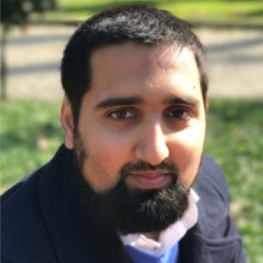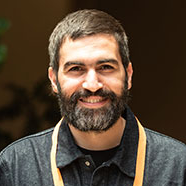Cell, Gene and Regenerative Therapy Processes
A special issue of Processes (ISSN 2227-9717). This special issue belongs to the section "Pharmaceutical Processes".
Deadline for manuscript submissions: closed (31 May 2021) | Viewed by 12243
Special Issue Editors
Interests: cell and gene therapy; bioprocess engineering; stem cells; regenerative medicine
2. Prometheus division of skeletal Tissue Engineering; Skeletal Biology and Engineering Centre; Department of Development and Regeneration; KU Leuven; Leuven; 3000; Belgium
Interests: bioreactors for cell therapy and regenerative medicine; biofabrication; automation; organoid technologies; tissue engineering for skeletal systems
Special Issue Information
Dear Colleagues,
Advanced cell, gene, and regenerative therapies are transforming healthcare, providing new therapeutic modalities which target a previously unmet clinical need. With the emergence of these advanced therapies, the opportunity to develop personalized medicines tailored to each patient has become a reality. Moreover, important discoveries and developments in molecular and cell biology such as gene-editing techniques allow for these highly efficacious therapies to be developed for a wider patient population from a single universal donor source.
With a growing number of gene, gene-modified, stem, and regenerative therapies gaining global regulatory approval and entering routine clinical practice, the advanced therapy sector is undoubtedly a growth industry. There are approximately 1000 active clinical trials involving the use of cells, gene-edited cells, or gene correction as a therapeutic modality, with more than 100 of these at Phase III, demonstrating the significant clinical activity in the field. This is matched by substantial industry activity in recent months, with notable mergers and acquisitions. However, the scalable and consistent production of advanced therapies faces a number of important challenges. Today’s manufacturing processes for these therapies are inherently inefficient, difficult to scale, are resource- and labor-intensive, require skilled personnel, and necessitate significant human intervention which can result in errors, contamination, and final product variation.
This Special Issue on “Cell, Gene and Regenerative Therapy Processes” is devoted to showcasing the recent developments in advanced therapy processes, including new strategies, manufacturing technologies, analytical techniques, data processing methods, and the integration of digital bioprocessing approaches. A wide range of therapeutic modalities as well as cellular and gene delivery platforms will be covered, including gene-modified cells, stem cells (pluripotent, adult, and progenitor cells), viral vectors, extracellular vesicles, and acellular modalities. Examples of relevant topics include:
- Upstream and/or downstream process development for advanced therapies;
- Expansion technologies or bioreactors for cell, virus, or extracellular vesicle production;
- Imaging or measurement tools for improved process analytics;
- Novel manufacturing technologies for advanced therapy production;
- Automation approaches for cell, gene, and regenerative therapy processes;
- Strategies to minimize process and product variation;
- Development of digital bioprocessing approaches for advanced therapies;
- Process monitoring and control strategies for improved production;
- Process analytical technologies and process intensification of advanced therapies;
- Decisional tools, process modelling, and cost-of-goods development to improve advanced therapy processing.
Submissions on these and other topics related to the theme of this Special Issue are welcomed from researchers in both academia and industry.
Dr. Qasim Rafiq
Dr. Ioannis Papantoniou
Ms. Jelena Ochs
Guest Editors
Manuscript Submission Information
Manuscripts should be submitted online at www.mdpi.com by registering and logging in to this website. Once you are registered, click here to go to the submission form. Manuscripts can be submitted until the deadline. All submissions that pass pre-check are peer-reviewed. Accepted papers will be published continuously in the journal (as soon as accepted) and will be listed together on the special issue website. Research articles, review articles as well as short communications are invited. For planned papers, a title and short abstract (about 250 words) can be sent to the Editorial Office for assessment.
Submitted manuscripts should not have been published previously, nor be under consideration for publication elsewhere (except conference proceedings papers). All manuscripts are thoroughly refereed through a single-blind peer-review process. A guide for authors and other relevant information for submission of manuscripts is available on the Instructions for Authors page. Processes is an international peer-reviewed open access monthly journal published by MDPI.
Please visit the Instructions for Authors page before submitting a manuscript. The Article Processing Charge (APC) for publication in this open access journal is 2400 CHF (Swiss Francs). Submitted papers should be well formatted and use good English. Authors may use MDPI's English editing service prior to publication or during author revisions.
Keywords
- advanced therapies
- cell therapy
- gene therapy
- bioprocessing
- bioreactors
- automation
- regenerative therapy
- viral vector
- stem cell
Benefits of Publishing in a Special Issue
- Ease of navigation: Grouping papers by topic helps scholars navigate broad scope journals more efficiently.
- Greater discoverability: Special Issues support the reach and impact of scientific research. Articles in Special Issues are more discoverable and cited more frequently.
- Expansion of research network: Special Issues facilitate connections among authors, fostering scientific collaborations.
- External promotion: Articles in Special Issues are often promoted through the journal's social media, increasing their visibility.
- Reprint: MDPI Books provides the opportunity to republish successful Special Issues in book format, both online and in print.
Further information on MDPI's Special Issue policies can be found here.







